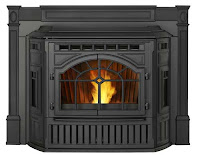Updated: July 2022 - There have been at least seven recalls of wood and pellet burning products since 1979 and one certification revocation. Four of those were in 2015-2016. While there are few reports of any injuries, recalls are expensive and time consuming for stove manufacturers.
The dangers posed by some of the stoves subjected to recalls are significant but may pale in comparison to the ongoing dangers of self-installed stoves that never get inspected. The Consumer Product Safety Commission (CPSC)'s 1982 survey of more than 2,000 households indicates that 70% of stoves in use were installed by the consumer, and half of these "do-it-yourself" installations were never inspected by a building or fire inspector. A very high percentage of self-installed stoves remains a high probability in the US, in part because of the increasingly high volumes of stoves sold through hardware chains and on-line. The percentage of self-installed stoves purchased on the second-hand market could be even greater than the 70% figure found in 1982. In addition to dangerous self-installation practices, the other main cause of stove-related house fires is excessive creosote build-up in chimneys that are not regularly cleaned.
The highest volume recalls have been pellet stoves, which pose less of a fire risk when self-installed, or from lack of chimney cleaning.
 |
2. The next largest recall was England Stove Works pellet Smartstove. The US-made unit was only sold for a few months in the fall of 2015. After the company received four reports of incidents and one minor injury, it initiated recall the following year. Englander sent consumers a free repair kit to remedy the issue. An updated version of the stove is 2020 compliant and on the market.
 4. The following year saw a much smaller recall of a Quadrafire device. This time it was a wood stove, the Explorer III, and involved 650 units. The US-made unit was sold for about a year and a half for $3,000. The danger was that the handle of the top lid could disengage and the lid could fall. There were five reports of incidents, two of which involved minor injuries to fingers. The company offered to fix the problem through its dealer network. The Explorer is off the market.
4. The following year saw a much smaller recall of a Quadrafire device. This time it was a wood stove, the Explorer III, and involved 650 units. The US-made unit was sold for about a year and a half for $3,000. The danger was that the handle of the top lid could disengage and the lid could fall. There were five reports of incidents, two of which involved minor injuries to fingers. The company offered to fix the problem through its dealer network. The Explorer is off the market.
 5. A small recall of 200 Scan Andersen wood stoves made by Jotul occurred back in 2010. A faulty door hinge led to the door falling off, and of the three reported incidents, one consumer received a bruised foot. The stove was made in Norway and the fix was a free hinge repair.
5. A small recall of 200 Scan Andersen wood stoves made by Jotul occurred back in 2010. A faulty door hinge led to the door falling off, and of the three reported incidents, one consumer received a bruised foot. The stove was made in Norway and the fix was a free hinge repair.
6. Going back a bit further in time, there was a recall of 1,300 EPA certified, catalytic Vermont Castings Sequoia wood fireplaces in 2006. At the time, Vermont Castings was owned by the CFM corporation and the units were made in Canada and the US. They sold from 2003 to 2006 for about $2,200. This was a more serious recall, as it involved insufficient insulation or a missing weld, and could cause these fireplaces to pose a fire hazard, though no incidents were reported. Consumers were advised to stop using the product immediately, and it is not clear if the company offered any remedy after 2008 when they went bankrupt.
 7. The final recall listed on the CSPC database dates back to 1979, and involved glass for stove doors that posed a breaking hazard. The glass doors were in “Hearth-Glo” wood burning circulators made by the Jackes Evans Manufacturing Company. These sold in 1977 and 1978, right before the EPA began requiring wood stoves to be certified. One thousand stoves were involved and customers could get free replacement doors.
7. The final recall listed on the CSPC database dates back to 1979, and involved glass for stove doors that posed a breaking hazard. The glass doors were in “Hearth-Glo” wood burning circulators made by the Jackes Evans Manufacturing Company. These sold in 1977 and 1978, right before the EPA began requiring wood stoves to be certified. One thousand stoves were involved and customers could get free replacement doors.






I have a comfortbilt pellet stove and though everything works great it emits a paint smell all the time. What can I do
ReplyDeleteCheck out the BBB complaints for comfortbilt pellet stoves
ReplyDelete